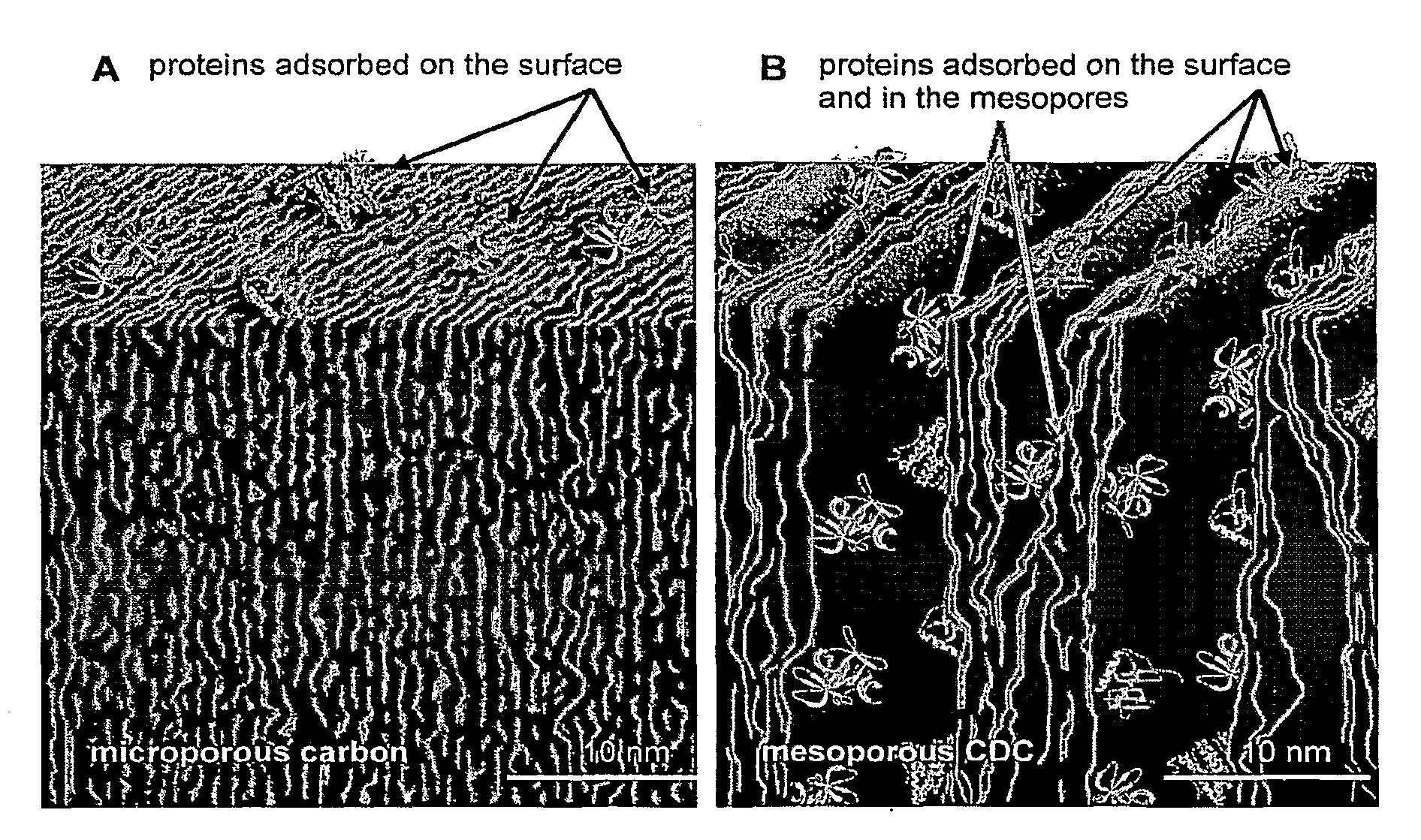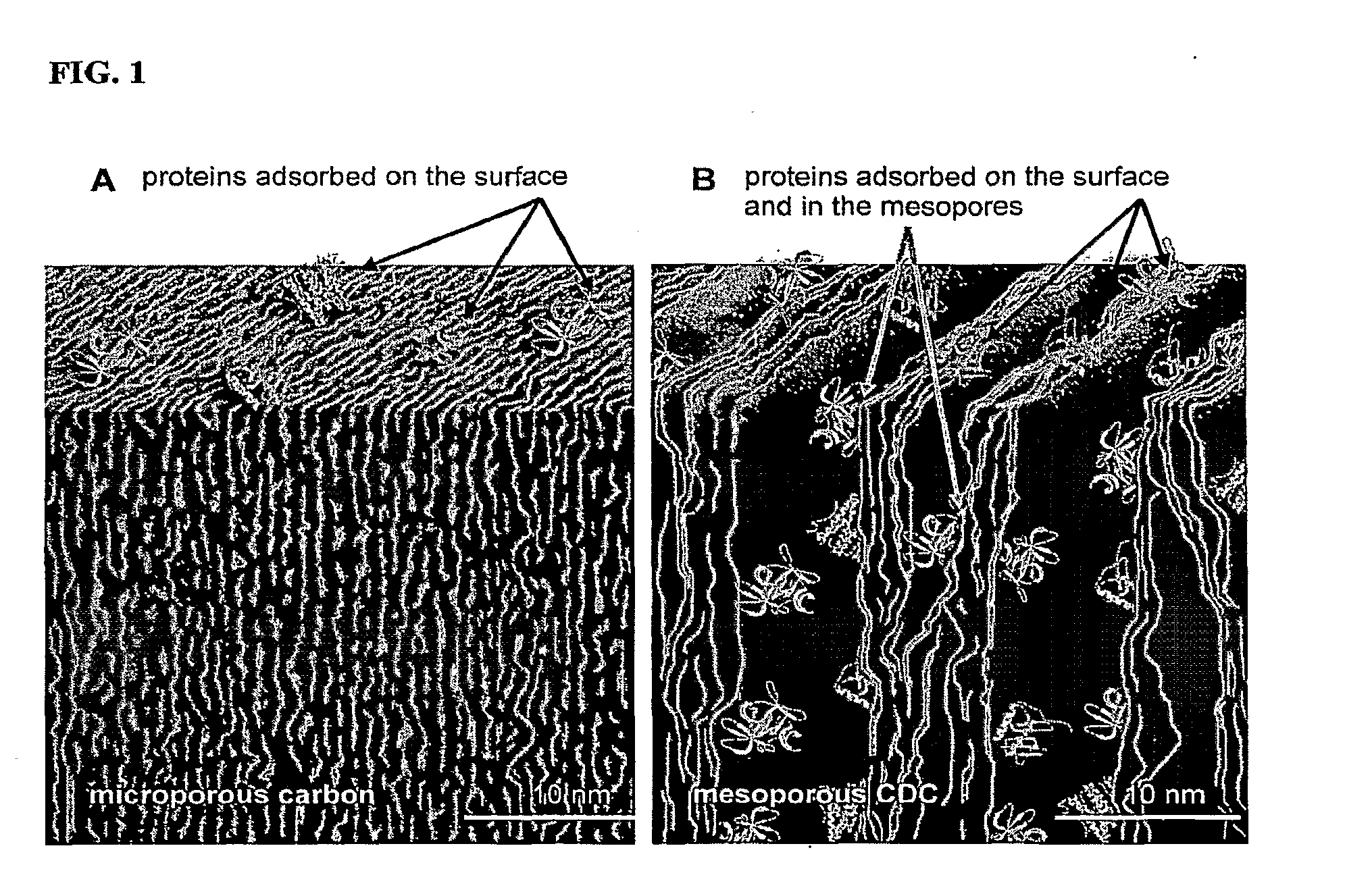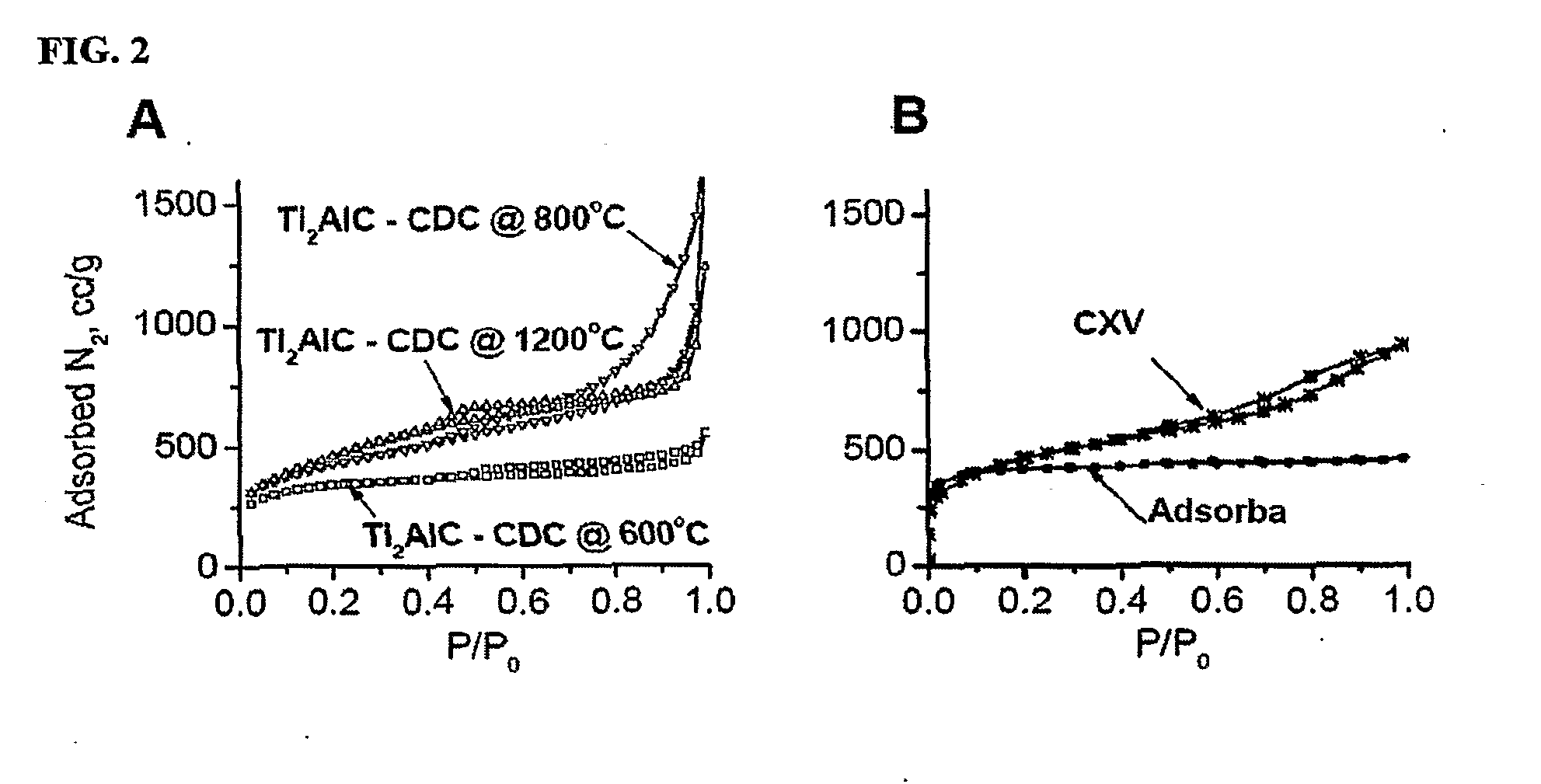Mesoporous carbons
a technology of mesoporous carbons and carbon nanotubes, applied in the field of mesoporous carbons, can solve the problems of $17 billion in healthcare system burden, disease is a leading cause of death, and sepsis is a significant burden on the healthcare system
- Summary
- Abstract
- Description
- Claims
- Application Information
AI Technical Summary
Benefits of technology
Problems solved by technology
Method used
Image
Examples
example 1
Synthesis of Carbide-Derived Carbons
[0040]CDCs were synthesized from Ti2AlC and Ti3AlC2 powders by the reaction with pure chlorine (99.5%, BOC gases) at 600, 800 and 1200° C. Both carbides were produced at Drexel University, but are now commercially available (3-ONE-2, Inc, NJ, US). The Ti2AlC and Ti3AlC2 carbides belong to the MAX-phase group of ternary carbides, having a layered hexagonal structure with carbon atoms positioned in basal planes and separated by 0.68 nm (Ti2AlC) or alternating layers of 0.31 and 0.67 nm (Ti3AlC2). Barsoum M W. Chemistry. 2000; 28:201-81. The CDCs produced from these carbides are known to posses slit-shaped open pores Gogotsi Y et al. Nature Materials. 2003; 2:591-4; Yushin G et al. Carbon. 2005 44(10):2075-82; Hoffman E et al. Chem Mater. 2005; 17(9):2317-22. The average particle size of the carbide samples used in the present experiments was ˜10 μm, as measured using a particle size analyzer (Horiba LA-910, Japan). For CDC synthesis, the selected ca...
example 2
Characterization
[0041]The sorption performance of the CDCs was compared with that of Adsorba 300C and CXV carbon adsorbents. Adsorba 300C (NORIT Americas, Inc., Marshall, Tex.) is an activated carbon produced from peat, and coated with a 3-5 μm thick cellulose membrane for better hemocompatibility. It is commercially used in adsorbent-assisted extracorporeal systems manufactured by Gambro, Sweden. CXV is an activated carbon obtained from CECA (subsidiary of Arkema, Inc., Paris, France), known to be extremely efficient for cytokine removal applications and thus used as a benchmark reference.
[0042]The structure of the CDCs was investigated using high-resolution transmission electron microscopy (HRTEM). The TEM samples were prepared by two minutes sonication of the CDC powder in isopropanol and deposition on the lacey-carbon coated copper grid (200 mesh). A field-emission TEM (JEOL 2010F, Japan) with an imaging filter (Gatan GIF) was used at 200 kV.
[0043]The porosity of the produced CD...
example 3
[0049]Fresh frozen human plasma (NBS, UK) was defrosted and spiked with the recombinant human cytokines (TNF-α, IL-1β, IL-6, and IL-8; all obtained from BD Biosciences, San Jose, Calif.) at a concentration of about 1000, 500, 5000, and 500 pg / ml, respectively. These levels are comparable with the concentrations measured in the plasma of patients with sepsis. Cohen J & Abraham E. J Infect Dis. 1999; 180:116-21; Heering P et al. Int Care Med. 1997; 23:228-96; Marum S et al. Crit Care Med. 2000; 4:66. Carbon adsorbents (0.02 g) were equilibrated in phosphate buffered saline (PBS; 0.5 ml) overnight prior to removal of PBS and addition of 800 μl of spiked human plasma. Controls consisted of spiked plasma with no adsorbent present. Adsorbents were incubated at 37° C. while shaking (90 rpm). At 5, 30 and 60 min time points, samples were centrifuged (125 g) and the supernatant collected and stored at −20° C. prior to ELISA (BD Biosciences) analysis for the presence of cyt...
PUM
| Property | Measurement | Unit |
|---|---|---|
| specific surface area | aaaaa | aaaaa |
| temperature | aaaaa | aaaaa |
| temperature | aaaaa | aaaaa |
Abstract
Description
Claims
Application Information
 Login to View More
Login to View More - R&D
- Intellectual Property
- Life Sciences
- Materials
- Tech Scout
- Unparalleled Data Quality
- Higher Quality Content
- 60% Fewer Hallucinations
Browse by: Latest US Patents, China's latest patents, Technical Efficacy Thesaurus, Application Domain, Technology Topic, Popular Technical Reports.
© 2025 PatSnap. All rights reserved.Legal|Privacy policy|Modern Slavery Act Transparency Statement|Sitemap|About US| Contact US: help@patsnap.com



